FlexBeam Case Studies: Benefits and Uses

FlexBeam case studies are the best way to illustrate its power and effects. FlexBeam is a portable near-infrared therapy device that uses the power of red and near-infrared light therapy. It emits red and near-infrared light through LED technology, a treatment referred to as Photobiomodulation (PBM) in medical terms.
Red and near-infrared therapy devices, like FlexBeam, usually employ either laser or LED diodes to produce light wavelengths identical to those emitted by the sun. Our bodies have evolved to absorb and utilize this natural light as a form of electromagnetic radiation, using it as a fuel for a plethora of cellular processes.
The key mechanism behind the numerous benefits of red and near-infrared light therapy is providing the mitochondria with more energy. In that way, they can boost ATP production and distribute that energy where it is needed the most. As a result, this can lead to:
- Enhanced energy levels
- Relief from pain
- Reduction in inflammation,
- Faster injury recovery
- Boosted athletic performance,
- Better post-workout recovery
- Modulation of the immune response,
- Improved sleep quality,
- Regulated hormonal balance,
- Improved mental well-being
- Expedited wound healing
It was our goal, at Recharge Health, to design a device that would have minimal side effects and assist the body heal itself. After researching the extensive database of studies on near-infrared therapy, studying the research results and testing the device, we have created FlexBeam. Now, we are proud to be able to display the results of our own FlexBeam case studies.
Characteristics of FlexBeam
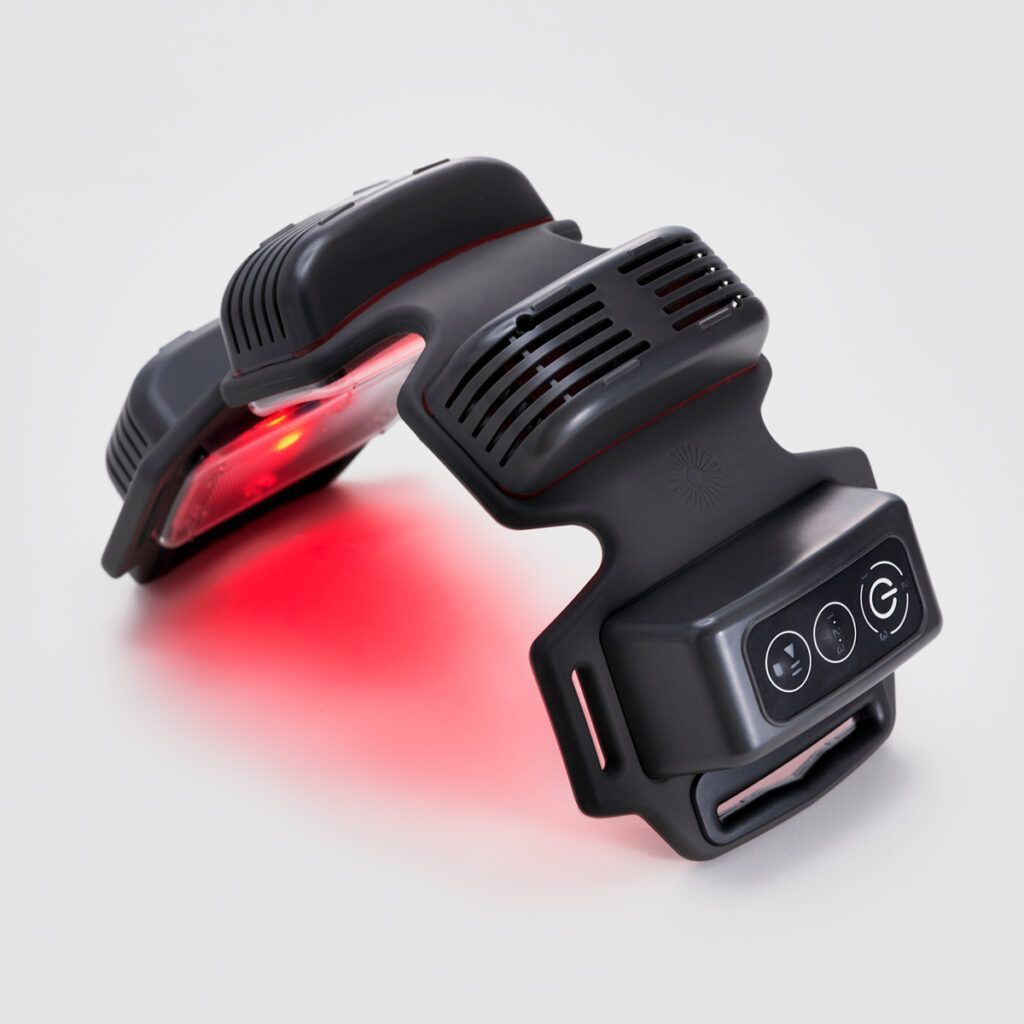
FlexBeam consists of 3 light pods, 2 infrared, and one red LED in each pod. The wavelength of these LEDs is 800 – 850 nm for near-infrared pods and 610-650 nm for red light pods. Other important specifics include:
| Max. Output Optical Power Density | 110mW/cm2 |
|---|---|
| Application Programs | 3 preset programs |
| Application Time | 10 minutes per program |
| Battery | Rechargeable Lithium-ion battery |
| Weight | 0.775kg |
| Cooling | Active cooling by fan |
| Safety | Over-temperature and over-current auto shutdown feature |
| Medical Device Class | Not a medical device |
| Compliance | EN 55014-1:2017; EN 55014-2; EN 61000-6-3:2011;EN 61000-6-1:2007; EN 61000-3-3: 2013; EN 61000-3-2: 2014; EN 62471: 2008 |
After creating FlexBeam and distributing it to thousands of users worldwide, it was the time to get some more in-depth data about its effectiveness. Here are the most prominent clinical and FlexBeam case studies, and their results.
Since 2021, Recharge Health has partnered with Consensio Treatment Center in Oslo to learn more about how FlexBeam can best integrate into professional therapy, including physiotherapy, osteopathy, and chiropractic treatments.
“I use FlexBeam daily on patients, completing about 150 treatments per month. What I’ve clearly observed is it gives better results and has shortened the treatment time overall. Issues you expect to be a problem just disappear by themselves after only one or two treatments. It’s been particularly helpful with stiffness in neck and shoulders and lower back, those kinds of problems. In the case of a pulled muscle, for example, you can expect to shave off one-third of the recovery time. I find FlexBeam to a very effective tool, it’s natural, and it’s very easy to use”
Thomas R. Jensen
Managing Director and physiotherapist of Consensio Clinic, Oslo
In addition to these ongoing qualitative professional assessments, we conduct our own quantitative clinical studies of FlexBeam for various benefits.
FlexBeam for Pre-Conditioning and Post-Training Recovery: Evaluation Study
The idea behind this study was to discover the effects of FlexBeam on athletic performance when used before and after the physical activity in question. The goal was to check endurance, fatigue, and recovery. This was a randomized, double-blind, placebo-controlled study.
Participants: Healthy, 25 – 45 years old males and females were recruited for this study.
Procedure: There were two parts of the study. In the first part, FlexBeam was used prior to exercise, while in the second part, it was used post-exercise.
Each of the participants were given a FlexBeam and two sham devices in a randomized way. FlexBeam was applied to the target muscles at four different points, amounting to a total exposure time of 40 minutes.
Measurement: The performance tests were conducted with three-day pauses. The number of sets (reps) until fatigue was used to measure the effects at baseline and after the session with FlexBeam. Data were collected at three separate intervals: immediately following the use of FlexBeam, one-hour post-application, and 24 hours later.
Result: This study conclusively provides real-world data supporting the superior effectiveness of FlexBeam compared to sham devices. Further research is needed to determine the most effective parameters.
In both parts of the study, using FlexBeam either one hour before or after physical performance produced comparable and significant improvements. Minimal differences were observed between the two sham devices.
Exercise sets performed until fatigue were enhanced by approximately 45% when FlexBeam was used prior to the workout and by about 41% when used post-workout, compared to baseline measures.
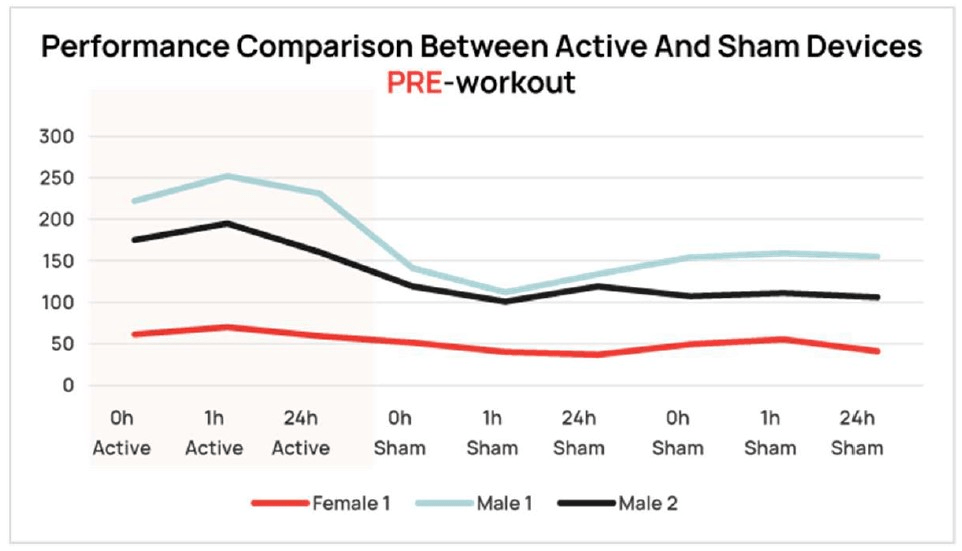
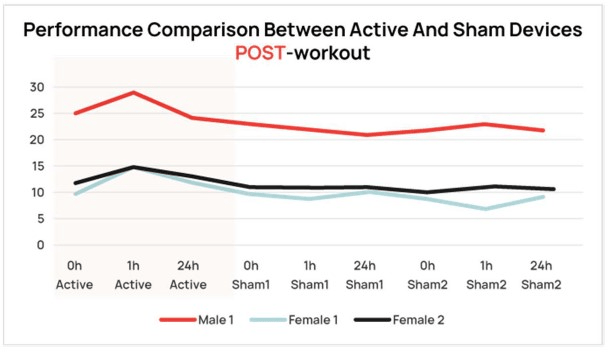
FlexBeam for Performance Improvement for Javelin Throw: Case Study
This is one of the spots-based FlexBeam case studies. It was performed in cooperation with Yoav Nash, “Zero Injuries”, Tel Aviv, Israel. The javelin throw is a track and field event. Javelin, a spear about 2.5 m (8 ft 2 in) in length, is thrown. This case study was meant to establish whether FlexBeam applications would help achieve better results in javelin throwing.
Participants: Healthy, male, 19-year-old active athlete (javelin thrower)
Procedure: To establish the baseline, the athlete would throw the javelin before using FlexBeam.
FlexBeam was applied one hour before the javelin throw. The FlexBeam was used for a total of 40 minutes over the top of the shoulders, m.pectoralis, thoracic and lumbar spine. The athlete would then perform four throws.
Factors affecting the performance were roughly the same, the same routine, similar food consumption and sleep patterns, and no enhancement drugs were used. Wind conditions were identical on both days (~10km/h).
Measurement: The measurement observed was the length of the throw.
Result: The best result at baseline was 54.13 meters, and the best result following FlexBeam exposure was 58.2 meters, which means the athlete managed to throw the javelin farther by 4.07 meters.
FlexBeam for Pain Relief: Internal Research Summary
The objective of this addition to the extensive FlexBeam case studies was to understand the efficacy of FlexBeam for pain relief in both clinical and at-home environments when following a pain-relief regimen.
Procedure: The pain relief after FlexBeam application was measured in both clinical and in-home settings. The regimens were as follows:
- Option A
- Frequency: 3 sessions a week
- Duration: three weeks; followed by a week of break
- Setting: clinical setting
- Option B
- Frequency: one or two sessions a day; workdays only; no weekend sessions
- Duration: two weeks; followed by a third week with a single session every other day and a fourth week of break.
- Setting: at-home use
- Option C
- Frequency: one session a day, every other day
- Duration: three weeks, followed by a one-week break
- Setting: at-home
Measurement: Total of 50 of data entries points on pain score using of Visual Analogue Score (VAS) of pain (0-10) before the use of FlexBeam and compared with the score after 1 (three weeks) or 2 courses (six weeks) of FlexBeam applications
Result: Overall, there is a high satisfaction score, in average pain presented at 5.9 out of 10 before intervention and dropped down to 1.52 out of 10 within 3 – 9 weeks study time. Graphical representation demonstrates 75% improvement in the pain score.

FlexBeam for Sleep Regulation: Case Study
Male, 34 years old, with over 8 years of chronic insomnia that he did not attribute to a seasonal disorder (SAD). He felt exhaustion, drowsiness, foggy mind, headaches, and heart palpitations.
Procedure: The patient used FlexBeam in 3 places of total 30 minutes (10-minute cycle at each position), daily for 5 days with 2 days gap. Total of 3 weeks, then, every other day the following week. After 4 weeks this evaluation study, melatonin level was evaluated before and after a course of FlexBeam applications. Melatonin is a powerful antioxidant that protects mitochondria and directly regulates biological clocks. It is a specific marker for the circadian rhythm.
Results: Regulation in natural melatonin production restored a circadian rhythm and sleep. Nine months later, he still reported a normal sleep pattern without further intervention.
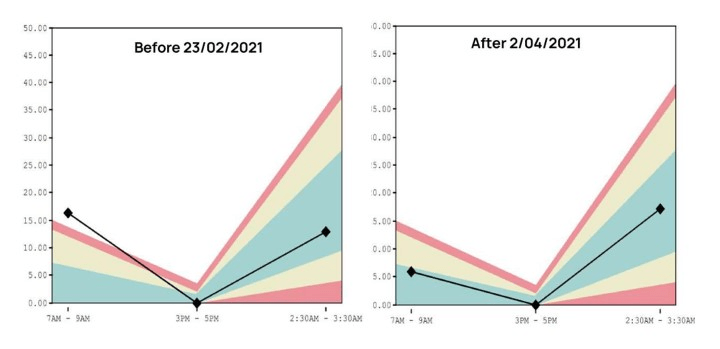
FlexBeam for Testosterone Regulation: Case Study
A male 46- year-old male volunteer was invited to participate in a study. His initial complaints were about poor libido and the ability to maintain an erection. A hormonal decline affects both men and women. Typically, postmenopausal women suffer from brittle bones due to osteoporosis.
A clear drop in testosterone may contribute to the development of this debilitating condition. Also, male patients experience muscular waste and reduced sexual desire which is often linked with lower testosterone and aging.
Procedure: The patient was treated daily, following a specific protocol, with a total of two courses of 3 weeks of daily applications of the FlexBeam.
Measurement: To objectively measure the outcome, his testosterone levels were assessed before the study via blood test and then 4 weeks, 7 weeks, and 4 months points in time from the beginning of the case study.
Results: Results demonstrated an increase in bioavailable Testosterone by 48% after continuous six weeks of use and a week off (at 7 weeks) and maintained in the next four weeks of the study, when he occasionally used FlexBeam with the same protocol. The result was sustained during the next six months.
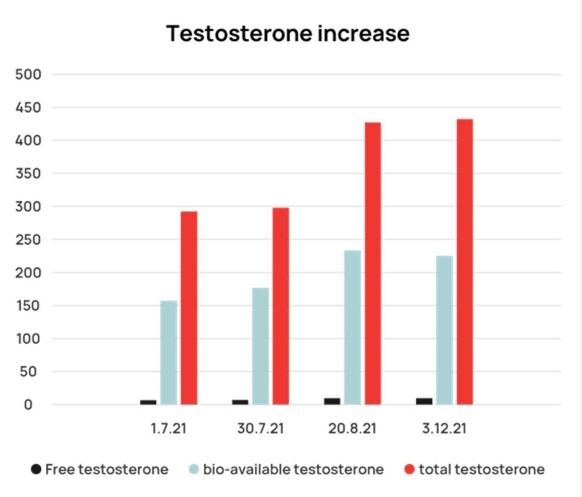
A Note on FlexBeam Case Studies
These FlexBeam case studies are not as big or as extensive as we would like them to be. That is something that we are currently working on to rectify, and we will continue to do so. However, the research about red and near-infrared therapy that FlexBeam uses is very well backed by science.
This is just the tip of the iceberg. We are constantly working on gathering our user experiences and testimonials and researching FlexBeam effects and efficiency. Conducting more thorough research and in-depth FlexBeam case studies will be a never-ending task for Recharge Health – and a task that we’re glad to take on.
